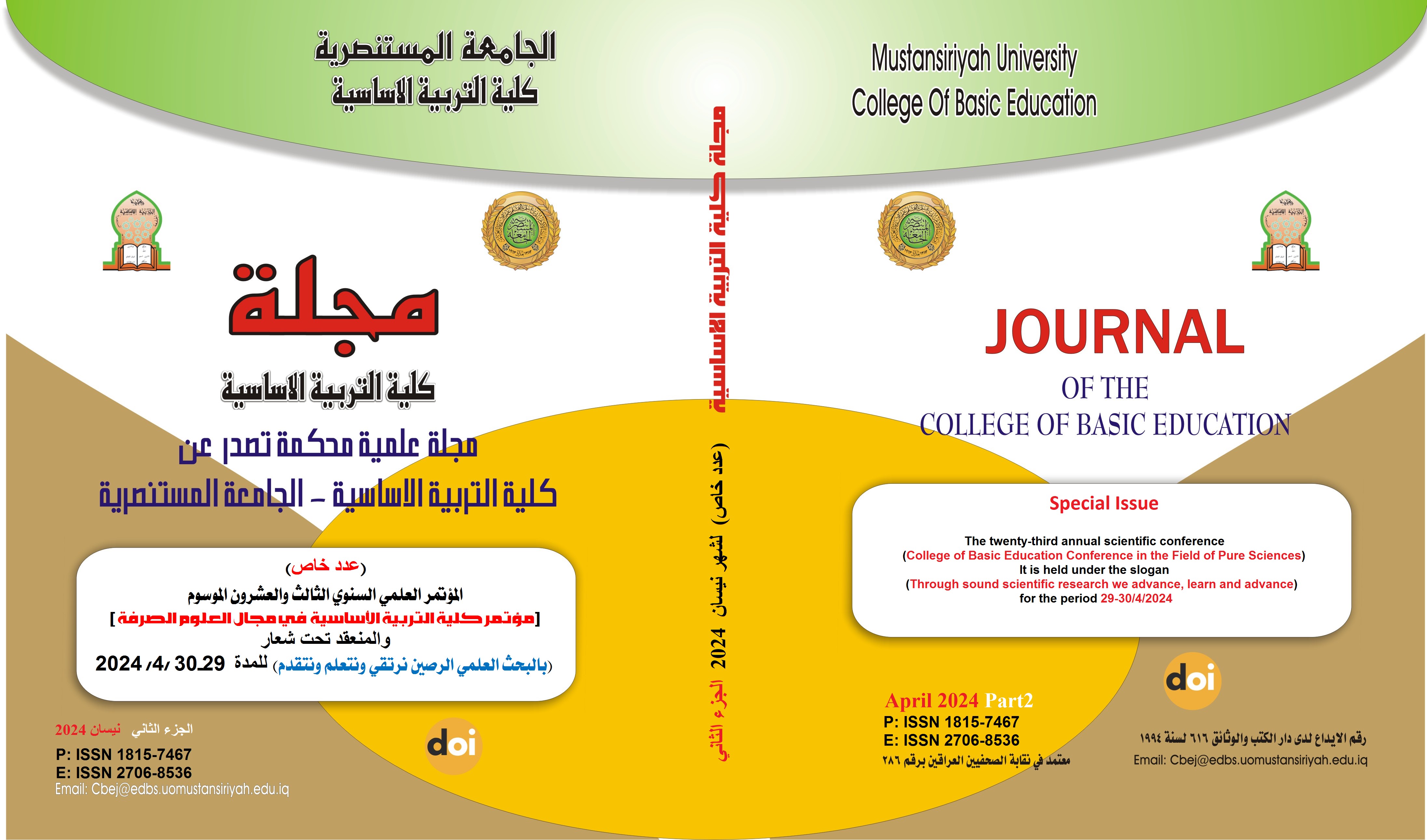Callus generation and estimation of the apigenin content in different vegetative shoots tissues of chamomile (Matricaria chamomilla L.) plants
Main Article Content
Abstract
The results successed in callus initiation from the hypocotyl stems segments of chamomile (Matricaria chamomilla L.) seedlings on the solid MS (Murashige and skoog, 1962) medium supplemented with the addition of 1.0 mg L-1 from each of Naphthaleneacetic acid (NAA), benzyl adenine (BA) and 2,4-Dichlorophenoxyacetic acid (2,4-D) with ratio reached to 100% after 30 days. The growth of the callus continued until it produced typical cultures and its differentiated for vegetative branches. Also, this study acheived genetic transformation of the chamomile plant with the Ri plasmid vector isolated from Agrobacterium rhizogenes ATCC 15834 using the direct injection technique, with superiority the concentration of 1214.32 ng μl-1 in the percent of hairy roots produced at 80% and vegetative branches at 94%
The results determined the apigenin content in different tissues for vegetative shoots of chamomile plant using High liquid performance chromatography (HPLC) technology, where the high concentration was 0.4451 µg ml-1 in the genetically transformed tissues with Ri plasmids vector at 1214.32 ng μl-1, superior to the other samples and the lowest content of apigenin was in the vegetative shoots which differentiated from callus with 0.0121 µg ml-1.
Article Details

This work is licensed under a Creative Commons Attribution-ShareAlike 4.0 International License.
